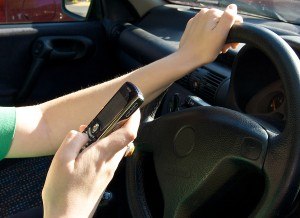The National Highway Traffic Safety Administration (NHTSA), part of the U.S. Transportation Department, said this month it is providing $550,000 to Connecticut and Massachusetts to help them devise anti-texting enforcement techniques and programs.
Each state will receive $275,000 to develop and train police officers on better methods for spotting drivers who are texting, and also to develop media techniques that alert the public to the perils of texting and driving.
“We have come a long way in our fight against distracted driving, but there is still much work to be done,” said U.S. Transportation Secretary Ray LaHood. “Texting behind the wheel is especially dangerous, which is why we’re working with states like Connecticut and Massachusetts to address this important safety issue.”
Authorities say that 39 states currently have laws on the books that specifically ban texting and 10 states have laws that prohibit the use of handheld cell phones while driving.
Not Easy to Detect Texting Behind the Wheel
But despite such laws, prior demonstration programs conducted in Hartford, Conn., and Syracuse, N.Y., found that it is more challenging to detect a driver texting behind the wheel compared to drivers talking on a handheld device.
The vast majority of tickets issued under those programs were for handheld phone use — only about five percent of the citations issued across both communities were for texting violations, according to officials.
“While it is relatively easier for law enforcement to determine illegal handheld cell phone use by observing the position of the phone at the driver’s ear, the dangerous practice of texting while driving is often not as obvious,” said NHTSA Administrator David Strickland.
“These two new demonstration programs will help identify real-world protocols and practices to better detect if a person is texting while driving.”
Watching From Overpasses
The demonstration grants call for Connecticut and Massachusetts to develop anti-texting enforcement protocols and techniques — such as using stationary patrols, spotters on overpasses on elevated roadways and roving patrols — to test their effectiveness in four successive waves of high-visibility enforcement activities over a 24-month period.
The results of these demonstrations will be documented for the benefit of other states which are facing the same challenges.
Was this article valuable?
Here are more articles you may enjoy.


 US Eyeing Ship’s Electrical System After Baltimore Bridge Crash
US Eyeing Ship’s Electrical System After Baltimore Bridge Crash  Synopsys Sued by Private Equity Firm for Shopping $3 Billion Unit
Synopsys Sued by Private Equity Firm for Shopping $3 Billion Unit  Inflation Contributes to Rising Loss Costs for US Commercial P/C Insurers: Fitch
Inflation Contributes to Rising Loss Costs for US Commercial P/C Insurers: Fitch  CoreLogic Report Probes Evolving Severe Convective Storm Risk Landscape
CoreLogic Report Probes Evolving Severe Convective Storm Risk Landscape 